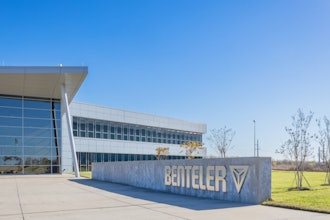Manufacturing facilities face significant challenges with controlling access to critical control points that present food defense risks. These critical control points and sensitive areas are identified in a facility’s Hazard Analysis & Critical Control Point (HACCP) plan. Challenges securing these critical control points abound due to the open layout of the physical plant. Most companies implement proper controls to restrict entry to the facility such as checking visitors in and out at the reception desk and issuing different badges for employees and visitors. However, once in the door it can be difficult to monitor and control approved access privileges, especially for persons such as contractors and third-party logistics staff (3PL), who typically have broad access inside the plant.
Uncontrolled access to critical control points poses significant brand reputation risks for manufacturing companies. Therefore, this relatively free movement of individuals inside the plant may present a HACCP violation and a defense risk for some particularly sensitive areas. To determine if risk exists, questions should be asked, such as:
- Are high risk areas where large batches of food are processed, or mixing areas where contaminants could easily be mixed into the food, susceptible to both unintentional and intentional food adulteration due to the traffic pattern for people and moving equipment?
- Are areas where allergens such as milk, eggs, seafood, nuts, wheat and soybeans are stored or processed susceptible to cross contact through employees who shouldn’t be passing through these sensitive areas?
- Are the areas separating raw vs. processed materials adequately controlled? What is the potential for cross-contamination?
- Are the shipping and receiving areas secured? What are the access points to these areas, and how are they managed to ensure the secure receiving and shipping of food?
Passive and Active RFID System Usage
The most common access control technologies in use today utilize passive radio-frequency identification (RFID) technology to issue identity cards that are presented within close proximity of a reader to gain entry through a door into a facility, based on a received signal from the fixed control points for power. The use of Proximity Access Control systems such as this are widespread and are effective in controlling entry into a facility or to critical control points such as laboratories and storage areas where access can be controlled through door entry and exit. However, they do not adequately address the issue of controlling access to other critical control points in open plant layouts where the traffic patterns of people and equipment present substantial food defense and safety hazards.
Active RFID technologies (where the individual tags use an embedded battery for power) open the door towards automated actionable intelligence using smart, networked devices for enhanced situational awareness across the enterprise. RFID systems like these can help significantly reduce brand reputational risk from intentional and unintentional food adulteration. Critical control points such as mixing areas or areas utilizing ingredients containing allergens can be designated virtual security zones, instantly sending out alerts from this system if anyone or anything has crossed into an area without being given the proper authorization level by staff. Furthermore, all visitors, including contractors and 3PL staff, can be tracked around the facility and be given specific authorization levels to match the areas where they have legitimate business reasons to work in.
Integrating networked digital video with both passive and active RFID access control technologies can trigger event based video recording that is searchable by location, time or date and can be instantly retrieved and viewed from any networked monitor. For example, the arrival and unloading of goods in the shipping and receiving areas can trigger video recording of the condition of the container seals and the trailers, the timeliness of the movement of cold chain products to storage, and association with the IDs of the staff handling the shipments. Queries on the status of a particular item can provide a snapshot, a video clip, or live video feeds to assist in providing video verification of specific events.
Comparison of Technologies
There are multiple technologies that are utilized in Real Time Location Systems (RTLS) to track people and equipment that are optimized for indoor and campus environments best suited for manufacturing facilities. Two effective technologies are Wi-Fi-based real time tracking solutions and control point location solutions.
Wi-Fi based solutions have the advantage of leveraging the existing Wi-Fi network that is commonly installed in facilities for remote computer access. This technology uses the Wi-Fi standard access points as reference points to identify the location of the tag based on signal strength. A site survey must be conducted to map out the virtual security zones that need to be monitored, and depending on the location precision that is desired, additional access points may need to be installed. Personnel and equipment tags programmed with specific authorities to enter virtual security zones can then be issued, for example, only employees responsible for the mixing area are issued tags for that area. All other employees, visitors and equipment without that authorization would trigger an alert if passing through that area, thus securing the area against contamination from people and equipment traffic.
Control point location solutions utilize active RFID tags that are awakened when passing through specific zones or control points. Activation zones are defined at installation with flexible wire loop antennas that generate a magnetic field that wakes up the tags, and can be adjusted dynamically to fit the physical environment. As personnel and issued equipment tags pass through the activation field, the activator’s location ID is written to the tag. The tag then transmits its ID number and the location ID, thus providing specific location information at time of activation as well as the direction of their movement, whether entering or exiting.
Manufacturers should choose the technology that best fits their unique physical plant layout and the specific critical control points that need to be monitored and secured. The greatest benefit is that by deploying these Real Time Location Systems, manufacturers now have a way to address the challenge of controlling access to sensitive areas in their open plant layouts from the day-to-day traffic patterns of people and equipment.























